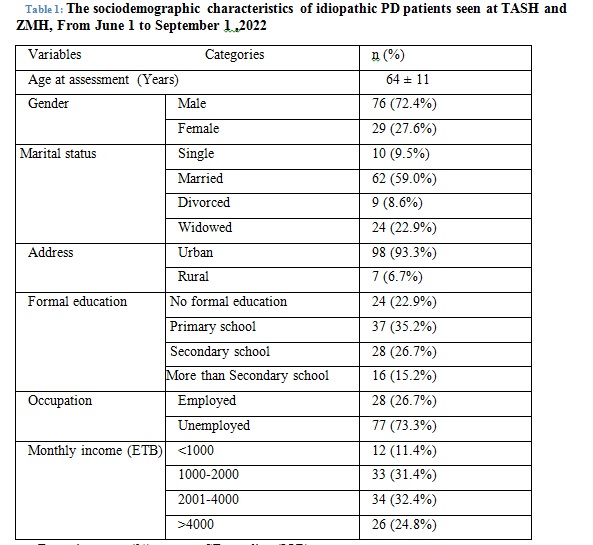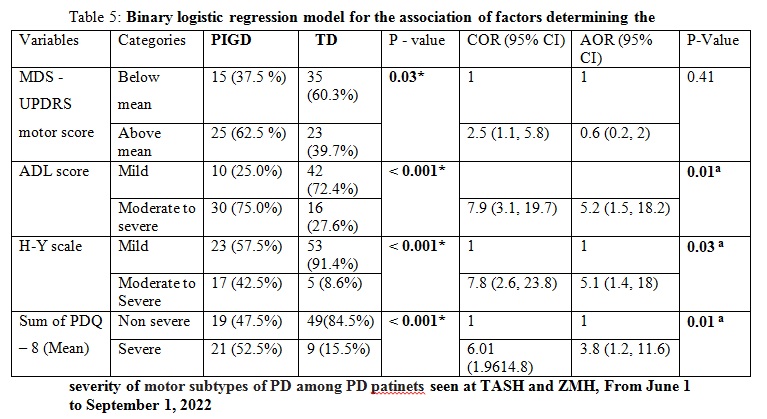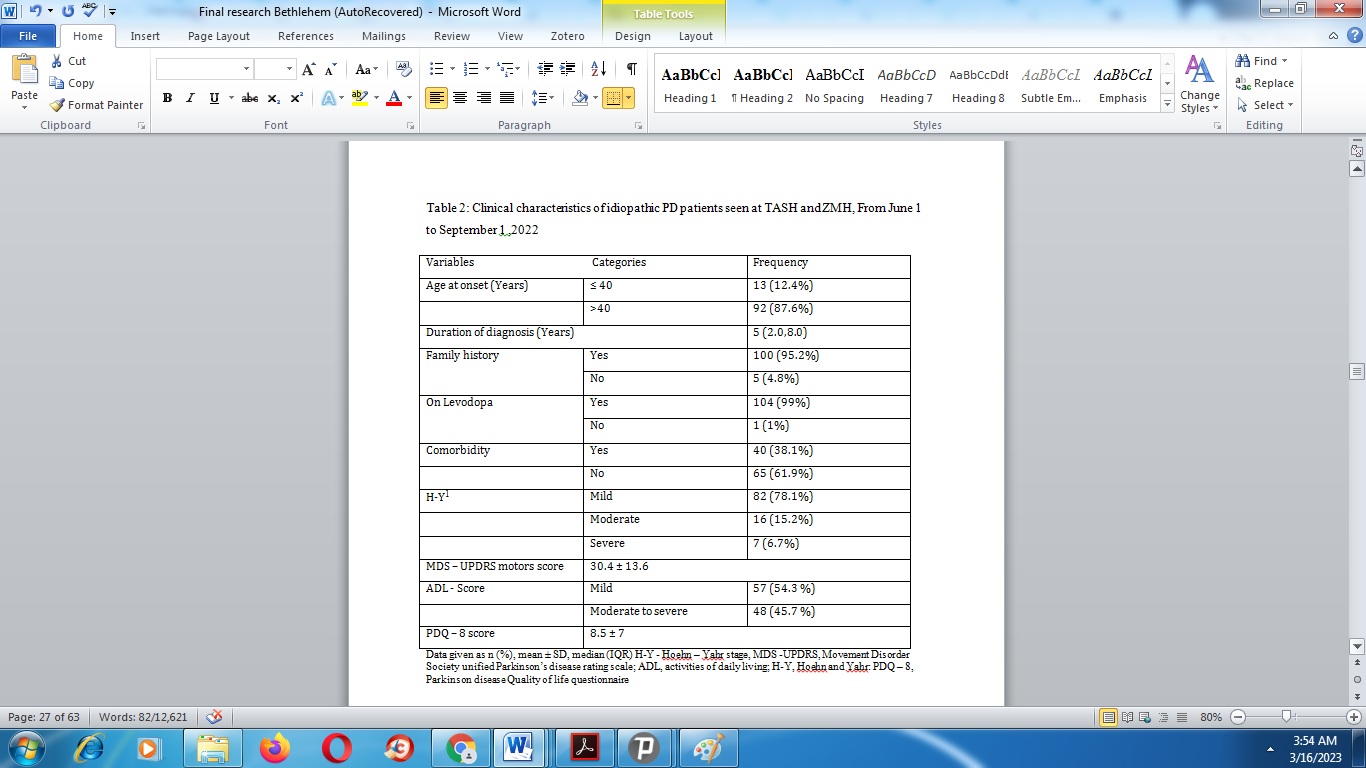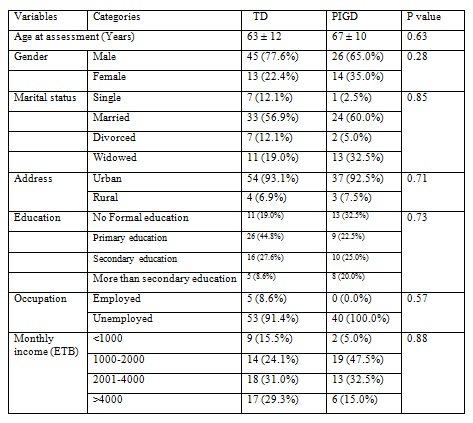Objective: This study aims to characterize the motor phenotype of Parkinson’s disease (PD), compare disease severity and to determine quality of life among the different motor phenotype of Parkinson’s disease patients in Addis Ababa, Ethiopia.
Background: PD is the second most common neurodegenerative disorder in the world. The disease has heterogeneous motor and non-motor manifestations suggesting the existence of distinct clinical subgroups and perhaps different pathogenic mechanisms. However, little is known about the motor phenotype of PD in Ethiopia. Understanding the motor phenotype and disease burden difference among PD patients will help plan and manage existing meager resources.
Method: The investigators were trained on UPDRS and MDS-UPDRS by a movement disorder specialist from Mayo clinic. The Stebbin’s motor phenotype classification criteria were used to categorize PD patients into tremor dominant (TD), postural instability and gait disturbance (PIGD) and indeterminate types. Disease severity was assessed using activities of daily living (ADL) of UPDRS subscale-II and Hoehn and Yahr Scale (Y-H). Quality of life was assessed using Parkinson’s disease Quality of life Questionnaire (PDQ- 8).
Results: A total of 105 idiopathic PD patients were evaluated. The male-to-female ratio was 2.6:1 and the mean age was 64 years (SD±11). Minority (12 %) had young onset disease, and only 5% had positive family history of PD. The most common motor phenotype (55.2 %) was TD, and the PIGD and indeterminate phenotype accounted for 38.1 % and 6.7 % of the total respectively. The adjusted odds ratio for the PIGD phenotype was higher by a magnitude of 5.2 (1.5-18.2) for the ADL, 5.1 (1.4-18) for the H-Y scale and 3.8 (1.2-11.6) for the PDQ – 8 as compared to TD phenotype.
Conclusion: The TD phenotype was the most common PD motor phenotype identified in this cohort of patients in Addis Ababa, Ethiopia. However, those patients with the PIGD motor phenotype had higher disease burden as reflected by advanced disease stage, compromised activities of daily living and poor quality of life. The cost of care for patients with PIGD will therefore be higher compared to TD phenotype.
To cite this abstract in AMA style:
B. Getahun, H. Demissie, H. Nuri, S. Gugssa. Motor phenotype and disease burden among Parkinson’s disease patients of Addis Ababa, Ethiopia. [abstract]. Mov Disord. 2023; 38 (suppl 1). https://www.mdsabstracts.org/abstract/motor-phenotype-and-disease-burden-among-parkinsons-disease-patients-of-addis-ababa-ethiopia/. Accessed December 7, 2025.« Back to 2023 International Congress
MDS Abstracts - https://www.mdsabstracts.org/abstract/motor-phenotype-and-disease-burden-among-parkinsons-disease-patients-of-addis-ababa-ethiopia/




